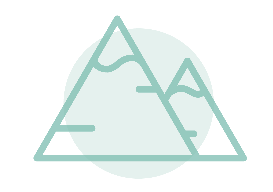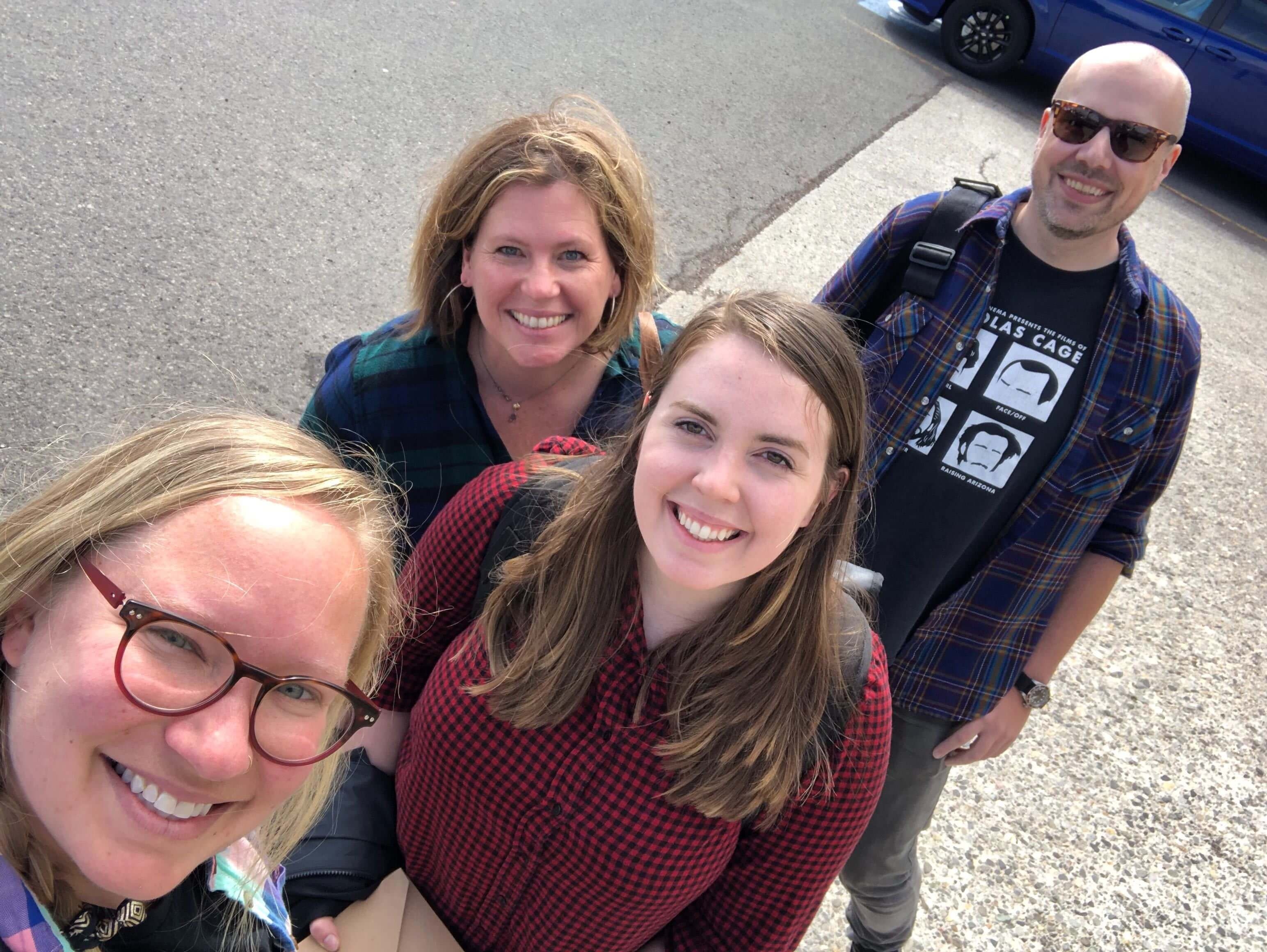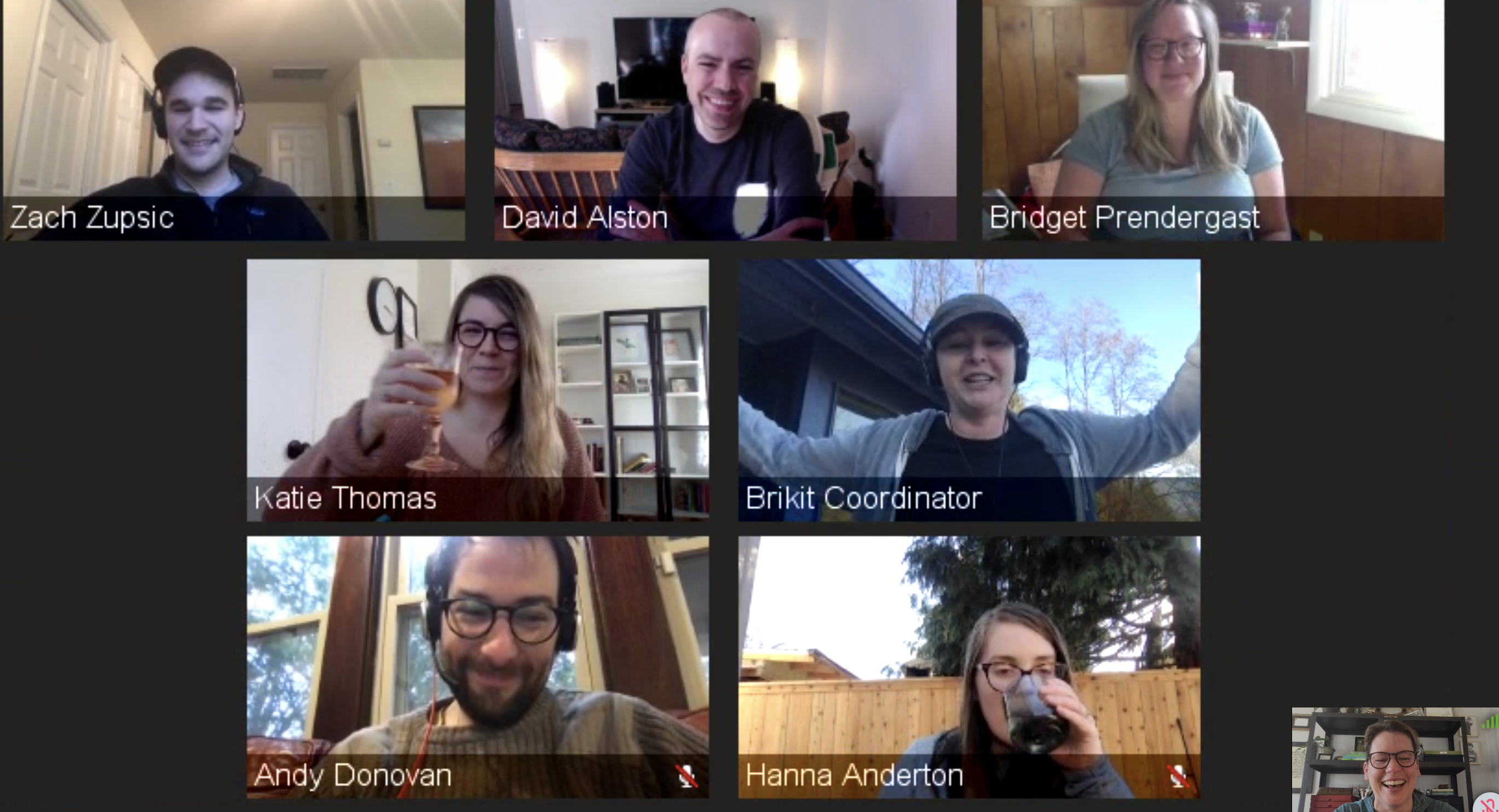Life Not Feeling So Beautiful, Lately?One of our heroes of graphic design, Debbie Millman, explains this way of being, often referred to as being 'design-led,' as "listening to your audience, understanding what their needs are, and then using that information to create the most powerful expression of whatever it is you’re creating.” Jennifer Kilian of McKinsey further states, "Design Thinking ... matters for business, because it's the single biggest competitive advantage that you can have. If you solve for your customer's needs first, you’ll always win."  Image Removed Image Removed
Here at Brikit, Making Life Beautiful is a beloved core value. Designing to enrich experience and enhance understanding, we describe design as our "primary weapon against complexity and chaos." Critical to our overall company culture and our purpose, design has been at the heart of our company since Day One. Although technology and software focused, we’re proud to be design-led here at Brikit, framing our approach to all of our work through four design disciplines: visual, information, technology, and solution design. We think a great deal about solving problems visually within that first discipline, and while we don't get the opportunity often to work purely on brand identity, a critical piece of our work is interpreting brands into fully-realized, familiar, beautiful 'homes' for those living those brands — the teams putting heads together, day after day, to get the job done. Naturally, we're pretty keen to get our own brand identity on solid ground. As the lead designer behind the past two iterations of our company’s identity, I knew the face of our brand needed help; as a growing but uniquely close-knit company, richly steeped in design, our values had remained constant, but our culture and "family dynamic" had evolved and deepened. Additionally, our very work had become enriched and further developed, radiating out across all four design disciplines. Millman defines branding as “deliberate differentiation,” with the ultimate outcome bringing that brand to life, showing how it “lives in the world,” and the resulting visual realization of the brand confidently conveying the brand’s point of view. It was readily apparent that what made Brikit BRIKIT had evolved, in some beautiful directions, and our brand, our culture, was no longer being adequately captured in our visual identity. One rainy early spring weekend, at the very end of Puget Sound, on a rocky beach in Washington Sate, our visual design team came together to steep in everything we knew about the culture of Brikit, and how we live in the world, doing our best work. The end goal? Crafting a reimagined and newly powerful expression of our Brikit brand. | HTML Wrap |
|---|
|  Image Removed Image Removed
|
We skipped the trust falls; as every creative knows, there’s enough vulnerability in our day-to-day design lives, offering up what we have crafted for critique and constant revision. We span life stages, genders, and backgrounds, but our small team, like our larger Brikit team, works together like a highly-functioning family. We know and value each other’s strengths and count on them to put wind in our sails and joy in our steps, allowing us a team, as always, to move faster and better together. This rich weekend of brainstorming and creative expression was no exception. Lead Designer Bridget Prendergast tells it this way: "It was a really valuable and fun time to bond as a team and bond with our brand. We had uninterrupted time to really let our brains steep in the whole creative process and what came out of it was something that we all felt was a part of us as a collective team. Because of that space we created, I feel a connection and ownership with this brand in a way I’ve never felt with others."
The new Brikit identity, hatched across deep work, solid snacks, and a refreshing beverage or two, coalesced into a new face that feels fresh, confident, innovative, and friendly, projecting a cheerful playfulness and approachability, in shape and fresh color palette and yet maintaining the reliability and professionalism for which our company is known.  Image Removed Image Removed
It is an identity that honors our past while also believing in our future: the three-color logomark nods back to the graphic foundational stepping stones which have been part of our identity since our company began. With our new brand, these stones, these building blocks, have been reimagined in a new orientation and fresh palette. (This logomark also looks forward to our revolutionary next-generation thinking of grids and "briks," and presentation modules: stay tuned on that one!) My favorite unlock of our creative team dive? The brightly colored 'jots,' which light up against the letterforms, conveying movement, forward motion, transit, and ‘wayfinding’ — a graphic representation of connecting teams with what they are looking for, and a strong nod to our warm embrace of information design, which we believe goes hand in hand with visual design. Setting our company name in a neutral gray is a bold, intentional move, reinforcing a solid, reliable underlying foundation for teams at work: we create a beautiful home that just works — and then? We get out of your way.  Image Removed Image Removed
Ultimately, more than a year later, with our new brand living out in the world, and further developed into a fully-functioning design system, we are overjoyed at how our brand has come to life.
Again, in Bridget's words: "I feel really proud of the work we did. It was absolutely a team effort and I think we all played a role in helping it come together to a finished product that felt very natural. It felt like a clear, fresh and fun representation that finally matched the direction our team and company was heading. More than a year later it still feels authentic and versatile — and very much US."most treasured values, we endeavor to make life beautiful in our work every day here at Brikit, and we do the same in our Work From Home (WFH) environments. Very possibly, you and your team may have suddenly found yourself, very rudely and without preparation, in a similar remote work situation, and may also be struggling with how to do so without losing your minds. Fuzzy Slipper-ing since 2005, we’ve learned a few things along the way. We’ll be sharing more in an upcoming webinar about how we set up our digital tools and "work homes" for success, but in the meantime, we thought we might share a few of our human-centered best practices, to not only keep your sanity intact, and the work flowing, but to thrive while doing so. Put Your Pants OnHere at Brikit we lovingly tease each other about needing to put on "real pants" when we get together in person. After many years of remote work, I have accepted that for me, “soft” pants are fine and my yoga pants can help me mentally get into my day, as a hopeful sign of movement to come. Every person needs to decide for themselves what "dressing for work" means for their own mindset and productivity. While fuzzy slippers are where I happily and gratefully thrive, you may be someone who needs to put shoes on and “real” pants too, in order for you to truly embrace work for the day. Experiment. Notice your focus level and mindset with different options. The one strongly recommended must? Do change out of what my niece calls “sleepy pants.” Make the effort to ready yourself for a new day, whatever that looks like to you. Go to Work, Come Home from WorkNo matter how small your home environment, we have found that carving out an area appointed for work can be key for WFH sanity. While an entire room for this purpose is ideal, it’s not a requirement: a corner of a room, or even a designated shelf for work items, can go a long way. Why? In today’s digital age, and certainly with many experiencing sheltering-in-place requirements, work and play are now heavily overlapping. Activities that used to be worlds apart (board room vs. dark movie theater, suit and tie vs. hoodie and sneakers) now nearly overlap: Zoom work meetings and Netflix binges happen in the same room, on the same couch, in the same clothes, on the same device. Our brains, then, needs other cues to "turn off" and cue up our downtime bodily response (hello parasympathetic nervous system.) In order for the edges of life to not completely bleed together, clear indicators of work and non-work can have profound mind-body effects. We suggest creating rituals for yourself that help you start and end work. This might look like entering a room, and switching on a favorite desk lamp at the start and reversing it at the end of the workday. Perhaps you have a favorite morning coffee mug, and then “open” your evening with a glass of red wine. You might ritually open the door and walk around the block each morning to feel like you are starting your day. Whatever "work" looks like for you at home, curate a sense of place for it to happen. Establish Red Light, Green LightPerhaps you are learning quickly how best to work from a home environment, and doing so with your kids in the same space. Never underestimate what a monumental task this is. We as adults are challenged with work/home separation when these activities happen in the same four walls, so it is not surprising our children will have trouble adjusting to an altered, unfamiliar lack of access to parents. They can see you — you’re right THERE — WHY can’t you help them get the LEGO pieces apart, please RIGHT NOW?! Encountering similar repeated frustrations years ago, while my children were small, I developed a "red light, green light" system and explicitly taught them what it means, and we role played and practiced well ahead of that key high-stakes client call. (You can use a ribbon on a door handle for this, a sign, or a simple colored post-it note.) Green LightCome on in! The door might even be open. I am likely doing tasks that don’t require a lot of focus, or lightweight "housekeeping" office needs, that don’t require deep work. Yellow LightThink twice before interrupting please. I’m likely not quite in deep work, and can pause to help or respond, but it’s not ideal. Red LightIs someone bleeding? Ok, open that door. Otherwise? Please, no interruptions. Virtual meetings fall here, client as well as internal, and so does deep, focused work, whether writing, or in the depths of code or process. Commune with Other Living ThingsNo roommates, no kids? While some thrive in solo headspace, and many find great satisfaction in uninterrupted deep-work focus time, all humans need connection. Merely looking at familiar faces has been proven to increase dopamine, our ‘feel good’ hormone. We carve out time to connect eyeballs with coworkers, regularly, even if virtually. Managing teams? We suggest actively encouraging opportunities for this connection, not only condoning but promoting activities such as remote happy hours. (In our pre-pandemic days, we found creative, regular ways to physically connect, even as the majority of our work days were spent together virtually. More on that soon!)  Image Added Image Added
Many of us at Brikit also have beloved animal friends at home — another heartbeat in the house and a warm purring puddle of fur behind your laptop can be life giving. Not an animal kind of person? Embrace the houseplant. Standing up and misting your green things, talking to them as you pinch off dead leaves and check water levels, is a fundamental act of life support. Put that Soup OnOne of the great advantages of doing work so close to a home kitchen is the ability to tend low-touch meal opportunities. The benefits go well beyond budget and health — actively nourishing yourself and others while you work can be fundamentally satisfying, and there’s nothing like smelling a bubbling pot of goodness as you type. Our suggestion is to plan for this, getting any ingredients prepped the night before or in the morning before you start work. Taking a five minute break in your day then to stir a pot, chop some aromatics, or punch down a dough provides an opportunity for your brain to do some parallel thinking, while getting you closer to a delicious lunch or dinner. And while we’re talking about nourishment, we suggest physically moving yourself away from work on your meal breaks. Step away from the desk, and set the table for one — stare into the middle distance, or out the window at the shape of a tree, while you breathe and feed yourself. The work will be there when you return. Make Time to MoveIt can be quite a shock to realize how little you actually move your body when there are no meetings to walk to, no lunches or coffees to retrieve, no bike rides or walks to work (or even from the parking lot.) When your commute consists of a move from your bed to the shower to the couch (annnnddd you might just skip that shower), prioritizing movement in your day is a must. This is physically vital, of course, and the mental health payoff is huge. At Brikit, we not only allow, but highly encourage scheduled, reserved movement in our workdays. It’s not unusual to see regular “appointments” for yoga or dance or barre or runs, as our folks use lunches or extend their days to prioritize movement. Much is being discovered, of course, about how the mammoth weekend gym session is less impactful than regular movement. Make it a habit to work small movement into your day: change locations so you are working from a counter or standing desk, on the regular; take a walk-and-talk meeting, as you loop the block; use that weird ten minute time that opened up for a few sun salutations; plan a team meeting around an outdoor hiking destination at the end of the day; jog flights to the basement (carefully!) and change the laundry or fold a load as fast as you can. Whatever your jam, set yourself up for success in order to plan for and prioritize movement: unfurl the yoga mat, set out the weights, put the (virtual) class on your calendar. Putting it All Together At Brikit, we embrace curating beauty in remote work environments, with whatever sings to our sense of well being (shelves of loved ones in photos, treasured books, art supplies, plants, fresh flowers). We move our bodies, while immersing in the beauty of our outdoor environments. We prioritize meaningful connection, and honor this need, even while physically separated. We have also found several very real, fundamental benefits of remote work, worth noting. WFH can mean much more intentional opportunities for deep work — protected chunks of time to go far and wide and focused on work that requires it. Additionally, harnessing the time we would normally be commuting means adding literal hours to our days. Finally, we deeply appreciate the very real positive impact our WFH situation means for our planet. Working from home can be a beautiful thing — it’s all in how you frame it. |